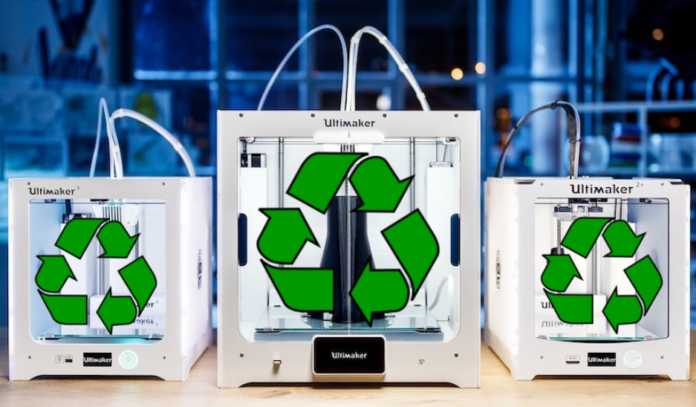Using computer-aided design, 3D printing builds an item up layer by layer in a very precise fashion. Initially, plastics and metal powders were used as the feedstock for the process, but now resins, carbon fibers, and even graphite and graphene are widely used too.
The technique has many advantages over traditional manufacturing methods: it enables rapid prototyping, increases efficiency, and permits the manufacture of unique items. It can also reduce production costs and carbon dioxide emissions from the process, and lower the energy consumption over the lifecycle of a product.
Traditional manufacturing methods can be wasteful, and consume large amounts of energy and raw materials. Rather than sculpting an item from a huge piece of metal or plastic, 3D printing precisely fabricates the item layer by layer. As a result, there is considerably less scrap waste – between 70% and 90% compared to some traditional manufacturing methods such as CNC manufacturing or injection molding.
Much of the design process is carried out on computers, and with the advent of improved computer simulations, it is possible to identify where parts can be improved. It is also possible to identify where they might fail, meaning fewer prototypes are required and less waste generated.
It can also streamline the manufacturing process, leading to efficiency gains and often fewer parts. This is seen in 3D-printed electronics where the electrical and mechanical functionalities can be combined, and therefore the number of parts reduced. Not only does this mean fewer parts that need to be designed or manufactured, but it can also result in better performing parts with improved durability.
A reduction in carbon dioxide emissions is also possible. Firstly, because printing is often a more efficient process, less energy is required to create the resulting products, especially when merging parts. Secondly, part consolidation can create long-term fuel savings and fewer emissions from cars and planes where they are used.
Companies and consumers are encouraged to use more sustainable raw materials. Those utilizing 3D printing can choose from a wide range of sustainable, recyclable and environmental feedstocks. Some 3D printers recycle post-consumer single-use plastics such as water bottles and convert them into a raw material it can use, while others use natural materials such as spent coffee grounds, algae, and cellulose.
It is likely that manufacturing in the future will be a blend of traditional methods and 3D printing. The latter tends to be more resource-saving and enables more efficient and novel designs that contribute to lower manufacturing requirements. It is also greener, cleaner, and more sustainable than traditional manufacturing techniques; even so, there is room for improvement.
Analysis
Using the technology of 3D printing in a large scale build feels like a big opportunity, and not something to overlook too quickly. Even though the initial usable material for 3D printing is plastic, many materials are being developed that are eco-friendly and recyclable. Even if the printed product ends up being plastic, the waste is typically reduced, since the printer only uses the necessary amount of plastic and does not leave wasteful scraps. 3D printing also allows the parts to be easily replaced if damaged or lost, which makes parts interchangeable and upgradeable upon request. If the printing site is local to the product implementation site, the travel cost of that part, as well as the carbon emissions are also decreased. This article also shows the strength in computer generated prototyping to test product strength, versus wasting time, money and materials on producing so many wasteful prototypes. Researching more sustainable filaments is going to be the next step in pushing towards a greener design.




